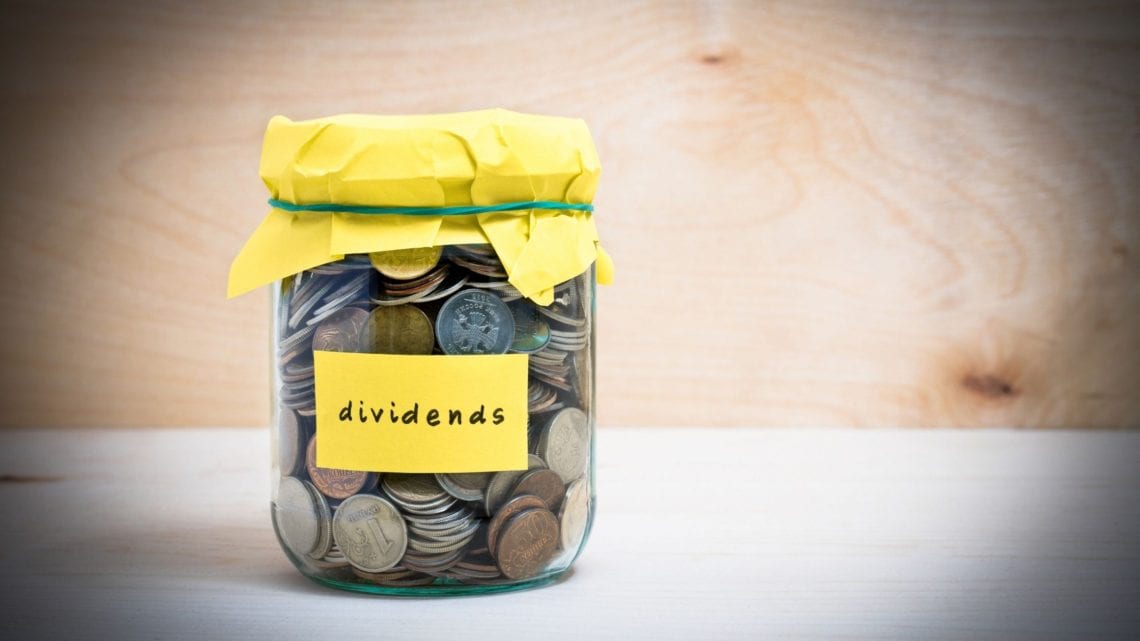
Are Dividend Stocks Worth It?
As an Amazon Associate I earn from qualifying purchases. We may earn money or products from other companies mentioned in this post at no cost to you!
Reading Time: 5 minutesThere are some out there who are reeeeally into growing a “dividend stocks portfolio”. Why is that, and what is it?
These are investors who are picking individual stocks specifically for the dividends they expect to receive. The reason many want this is because it’s a form of passive income. This is popular for those who are part of the F.I.R.E. movement, also. Wouldn’t it be nice to be making a $100K a year from passive income? There are many who look to dividends to perform this task.
Before you continue, just want to give a quick reminder that this is NOT investment advice, and you should read my disclaimer policy.
Let’s dive into this movement a little bit
What Is A Dividend?
Dividends are like the “interest” a company pays to you when you invest in their company through stock purchases, almost like you’re loaning them your money. You expect a return (the dividend) in exchange for giving them your money (by purchasing their company stock).
Dividends are a set amount per share. If a company states it will pay a quarterly dividend of $0.25, and you own 100 shares of the company, you will receive $25.00.
A Few Important Dates To Know About Dividend Stocks
There are a few important dates you need to know when you’re looking at the dividend information of a stock:
- Record date: This the first date you’ll see. It is when the Company’s board declares whether or not they will issue a dividend, possibly also a special dividend, and typically declare how much it will be.
- Ex-dividend date: In order to receive a dividend, you must own the stock before this date. Also, if you already own the stock, you cannot sell before this date or you will forfeit any dividend they declared.
- Dividend pay date: This comes after the other two dates, and is self-explanatory. This is the date you actually receive the dividend.
How Much Investment Will It Take To Live Off Dividends?
That, of course, is going to going to depend on several factors.
Let’s use Exxon (XOM) as an example because they are a steadily profitable company with a history of increasing their dividend payout. They’ve been paying an $0.87 per share for the last eight quarters. In order to generate a $100K annually in dividend income from this one stock, and assuming their share price was $50 (this isn’t its actual price, just for calculation purposes), you’d have to invest over $1.4 million dollars!
At that level, I don’t know if I’d be too concerned about trying to make $100K off of dividends!
There is something to be said for having this mindset of accumulating income-producing investments as your retirement years get closer and closer. I’m not suggesting to put all your money into one stock just for the yield- you can buy much more diverse funds that also give dividends. However, in theory, your goal should be to have accumulated this level of money by the time you do retire. So, when you retire, you could actually have this kind of money to invest and then you could live off the dividends!
Keep in mind, I’m using the example of a $100K in annual income. Again, in theory, you shouldn’t have debts and things of that nature, and expenses should be lower in your retirement. Also, there’s a possibility we’ll get social security payouts (we’ll see… not holding my breath), which may factor into your retirement income. This means you could actually get away with investing less in order to receive a livable income from dividends.
Here’s My Pros and Cons
- Dividends can be suspended, at worse; and decreased, at best. This can happen at any time. THEY ARE NOT GUARANTEED!
- If you have that much money to invest, why not make it work harder for you? You put that same money into a S&P index fund, based on the average rate of return, you’d be earning way more than your estimated yield in a dividend portfolio. And if you’re invested in an index fund, you’re likely to be receiving dividends and/or capital gains distributions anyway.
- If you’re chasing higher dividends rates, people are usually directly investing in single stocks. While this means your fees are likely nothing, this is usually risky because you’re putting too many “eggs in one basket”.
- Unlike interest you earn from a CD or other account, there is a possibility that you could lose all your initial investment.
- Dividends could have some tax advantages, depending on the dividend, your taxable income, and what type of account your holdings are in. The tax situation is something to consider, and one of the “pros”, in my opinion. Read more about the nuances here.
How I Invest In Dividend Stocks
Now, don’t get me wrong. It may sound like I’m anti-dividends, but that’s not really the case. I think dividends are great! You should try to get those “interest” payments from companies. And it’s always good to have diversity in your income and assets so, again, you don’t have all your eggs in one basket. But here’s how I would go about it though:
- Invest in mutual funds/ETF’s that have a diverse mix of companies. You still get the dividends from these companies, but you’re not invested in just one (or a select few). If dividends is your goal, I’d strongly suggest looking at “value” stocks as they tend to be more well-established companies- the kind that are paying larger, stable dividends. “Growth” stocks do not typically pay dividends.
- Be sure that you’re enrolled in DRIP- Dividend Reinvestment Program. This means that the dividends you receive from your holdings gets reinvested back into the funds/companies, thereby increasing your shares. This is known as compounding. You’ll be earning interest on your interest because your share keeps increasing. This really snowballs as your balances grow, and it really is magical!
I know that as I get closer to retirement, I will be paying closer attention to my holdings to see how much my dividends will be paying in those retirement years. Since my personal investment style is heavy into growth stocks (which is aggressive and they don’t typically pay dividends), I may have to make adjustments to move towards more less risky and income-producing investments.
Closing Thoughts
Back to the original question at the beginning of this article: are dividend stocks worth it? Well, yes, they are- as long as they fit with your investment strategy, you understand what you’re investing in, and you’re diversified! Don’t just pick a stock because it may have a high yield!
If you’re interested in investing in dividend stocks and need an investment account, I highly recommend M1 Finance! It has educational videos to help you get started, and provides visual representations of your portfolio. Or, if you want to shop around, try the comparison service SuperMoney to compare what will fit your needs!
So what do you think? Do you want to try to build a dividend portfolio now, or just keep investing for growth and worry about your dividend yield later?
RELATED
See this article for tips on getting started with a 401K.
See my rules to live by if you have a 401K.
IF YOU WANT TO SEE MORE…
Consider subscribing to my e-mail list. You can always unsubscribe, I won’t spam you!
Follow me on Facebook, Instagram, or Twitter.
Save this post on Pinterest by using the share buttons, and follow me, too!
If you want to start a blogging business, check out this FREE course!
If you want to make money from a blog, check out this program that got me started making my own money blogging!






9 Comments
Sandra Whitmore
Interesting reading. It’s always good to have an investment counselor for these matters.
Emily
Thank you for the info. I do like to keep up to date on things like this
Allison Peteet
Very interesting. I look forward to reading more of your helpful articles.
Gina
This is very informative, I will need to think more about this as I get closer to retirement as well.
Lisa, Casey, Barrett Dog
Thank you for the information.
Sabrina DeWalt
I have to admit that I am clueless and a little scared of investing in stocks. Thank you for the education.
Marianne
Thanks for all the great info. I am another person who is pretty clueless when it comes to stocks and investments of this type.
ANgela
Great article. I have been investing since my early 20s and dividends can and do add up. I do track them and as to the changes and notice some offer smaller dividends now. I too am close to retirement and that all adds up.
Cindy Moore
Excellent info! Thanks for sharing your wisdom.